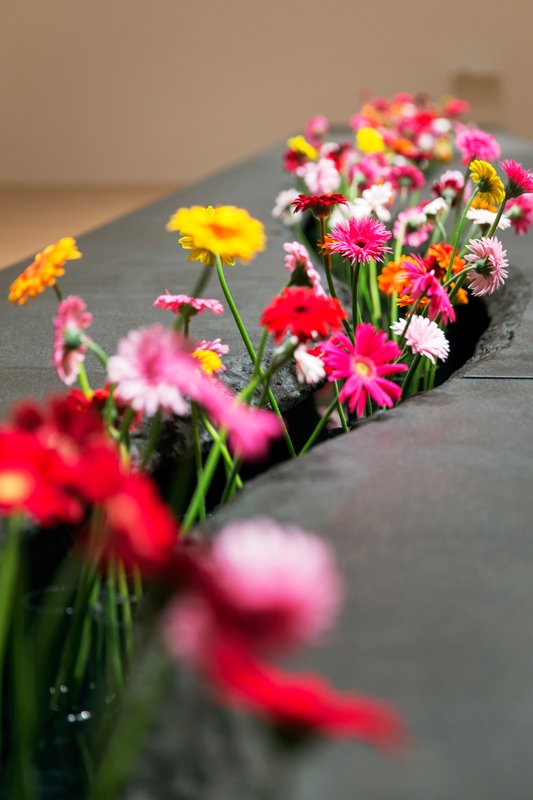A key to Taiwanese-American artist Lee Mingwei’s works is audience participation; or at the very least an open-mindedness. Often these works require spectators to go beyond a passive visual reception and take the work deeper into their hearts and minds. This in itself is a rather radical concept for visitors to large exhibitions in Japan; most showgoers’ experience of art is through crowded, blockbuster exhibitions of priceless classics and modern masters, presented with inviolable instructions concerning where to stand and where to look next. So how would local audiences take the kind of art experience that Lee has to offer?
Perhaps curator Mami Kataoka was concerned about this when she decided to conciliate this large survey of Lee’s practice with a side exhibition of work by 11 artists, religious leaders and philosophers. Moving from Lee’s Through Masters’ Eyes (2004, a reflection on the practice of copying and its place in Eastern and Western art traditions that features a series of six artists from the US and six from Taiwan, each of whom was invited to copy the work of the artist before them in a kind of chain letter that starts with a classical seventeenth-century Chinese mountainscape by Shi Tao), to twentieth-century calligraphy by Zen philosophers D.T. Suzuki and Shin’ichi Hisamatsu, viewers are presented with works that they can consume in the traditional passive viewer– artwork manner. This is followed by a room of mid- to late-twentieth-century performance art, including John Cage’s 4’33” (1952), and 7 Kinds of Sympathy (1976) by Allan Kaprow. The narrative finishes with relational aesthetics, as it is known today, presented via the work of Mingwei’s contemporaries, among them Rirkrit Tiravanija, who shares a Thai curry lunch with invited participants, and Tsuyoshi Ozawa, who makes art from dinner ingredients and then, similarly, shares a meal with his audience. Participation and performance are not new concepts for local art audiences; leaving aside the contemporary work of Ozawa and US-based Koki Tanaka, the Japanese context for participatory art – in the form of happenings, for example – has a lineage stretching back to the experimentation of postwar groups such as Gutai (during the 1950s) and Hi Red Center (during the 1960s).
As opposed to the outgoing optimism of Lee’s home base, New York, Tokyo is a city full of introverts. While giving a flower to a stranger, as is required for those participating in The Moving Garden (2009, a 12m-long granite table with 100 flowers that appear to grow out of a crack down its middle, visitors are invited to take a loose flower from the table on the condition that they give it away before reaching their next destination), could be a moment of delight for the majority of passersby on the streets of New York, the same act may cause a feeling of shyness, even discomfort, for those negotiating public spaces in Japan’s megalopolis. With The Mending Project (2009), in which the audience is invited to bring in clothes that need repair for the artist or his assistants to mend, Tokyo visitors seem reluctant to display their flawed garments. The result is that many of the ‘mended’ pieces left on the table are in fact augmented with embroidery rather than repaired. As a result, Lee’s works are renegotiated; Tokyo audiences do indeed change his art.
On the other hand, Fabric of Memory (2006), Lee’s collection of treasured heirlooms donated by volunteers, attracts the adoration of many gallery visitors. But it offers a more passive experience, in which audiences are invited to sit, view precious objects such as a well-loved teddy bear or an old kimono and read a text explaining the history of the piece written by its owner. The Letter Writing Project (1998/2004) also operates successfully. In it, visitors are invited to write ‘the letter they always meant to write’ and then choose either to seal it or to leave it open for others to read. Many local participants opt to share theirs with fellow visitors. If Lee’s projects are constantly renegotiated as they encounter new audiences, then perhaps we can also hope that they have an equal and opposite impact on the way those audiences relate to the world.
This article was first published in the March 2015 issue.
